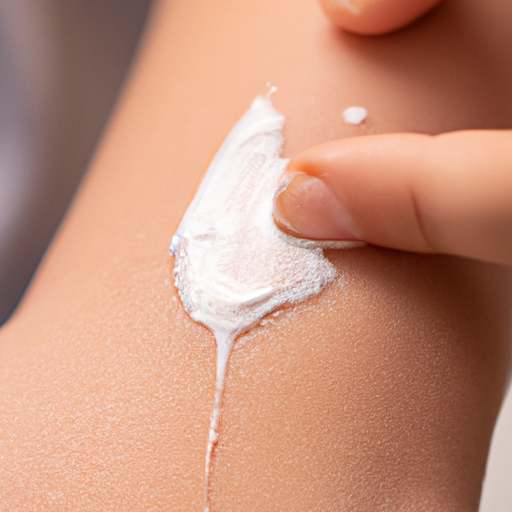Atopic dermatitis, also known as eczema, is a chronic skin condition that affects millions of people worldwide. Characterized by red, itchy, and inflamed skin, it can be a source of discomfort and frustration for those who suffer from it. In this article, we will delve into the various aspects of atopic dermatitis, including its symptoms, causes, and diagnosis. We will also explore the different treatment options available, from medications to lifestyle changes, that can help manage and alleviate the symptoms. Additionally, we will provide expert tips and home remedies for finding relief and effectively managing atopic dermatitis. So, if you or someone you know is struggling with this condition, read on to gain a deeper understanding and find practical solutions for a better quality of life.
1. Understanding Atopic Dermatitis: Symptoms, Causes, and Diagnosis
Atopic dermatitis, also known as eczema, is a chronic inflammatory skin condition that affects millions of individuals worldwide. It is characterized by red, itchy, and inflamed skin that can be both physically uncomfortable and emotionally distressing for those who suffer from it. Understanding the symptoms, causes, and diagnosis of atopic dermatitis is crucial for effective management and treatment of this condition.
Symptoms of atopic dermatitis can vary from person to person but commonly include intense itching, redness, dryness, and the formation of small, raised bumps on the skin. In severe cases, the skin may become thickened and scaly, leading to further discomfort and potential complications such as infections. While any part of the body can be affected, atopic dermatitis often appears on the face, neck, elbows, knees, and other flexural areas.
The exact cause of atopic dermatitis is still unknown, but it is believed to result from a combination of genetic and environmental factors. People with a family history of atopic conditions, such as asthma or hay fever, are more likely to develop atopic dermatitis. Additionally, certain triggers can worsen symptoms, including exposure to irritants like harsh soaps, detergents, or allergens like pollen, pet dander, or certain foods.
Diagnosing atopic dermatitis can be challenging as there is no definitive test available. Healthcare professionals typically rely on a thorough medical history, physical examination, and evaluation of the skin’s appearance and symptoms. They may also consider the family history of atopic conditions. In some cases, a patch test or a skin biopsy may be performed to
2. Effective Treatment Options for Atopic Dermatitis: From Medications to Lifestyle Changes
Atopic dermatitis, also known as eczema, is a chronic skin condition that affects millions of people worldwide. While there is no cure for atopic dermatitis, there are several effective treatment options available that can help manage the symptoms and improve the quality of life for those affected.
Medications play a crucial role in the treatment of atopic dermatitis. Topical corticosteroids are commonly prescribed to reduce inflammation and relieve itching. These medications come in various strengths and forms, and the choice of medication depends on the severity of the symptoms and the affected area of the body. It is important to follow the prescribed dosage and duration of treatment to avoid side effects such as thinning of the skin.
Another class of medications commonly used for atopic dermatitis is topical calcineurin inhibitors. Unlike corticosteroids, these medications do not cause skin thinning and can be used on delicate areas like the face and genitals. They work by suppressing the immune response that leads to inflammation and itching.
In cases where topical medications are not sufficient, oral antihistamines may be prescribed to help alleviate itching and promote better sleep. These medications work by blocking the effects of histamine, the chemical responsible for triggering allergic reactions.
In addition to medications, lifestyle changes can greatly contribute to managing atopic dermatitis. One of the most important lifestyle adjustments is maintaining proper skin hydration. Regular use of moisturizers can help restore and strengthen the skin barrier, reducing dryness and preventing flare-ups. It is recommended to use fragrance-free and hypoallergenic moisturizers to minimize potential irritants.
Avoiding triggers that worsen symptoms is also crucial in managing
3. Managing Atopic Dermatitis: Expert Tips and Home Remedies for Relief
Managing Atopic Dermatitis: Expert Tips and Home Remedies for Relief
Living with atopic dermatitis, commonly known as eczema, can be challenging due to the persistent itching, redness, and discomfort it causes. However, there are several ways to manage this skin condition effectively. In addition to following medical advice and treatment plans prescribed by dermatologists, incorporating expert tips and home remedies can provide relief and improve the overall quality of life for individuals with atopic dermatitis.
1. Moisturize Regularly:
Keeping the skin well-hydrated is crucial in managing atopic dermatitis. Applying a moisturizer immediately after bathing helps to seal in moisture and prevent dryness. Look for fragrance-free and hypoallergenic moisturizers that are specifically formulated for sensitive skin. Applying moisturizers multiple times a day, especially after washing hands or coming into contact with water, can help alleviate dryness and itchiness.
2. Avoid Triggers:
Identifying and avoiding triggers that worsen atopic dermatitis symptoms is essential. Common triggers include certain fabrics, such as wool or synthetic materials, harsh soaps or detergents, extreme temperatures, and certain foods. By keeping a diary of potential triggers and monitoring flare-ups, individuals can better understand what exacerbates their symptoms and take necessary precautions to avoid them.
3. Maintain a Healthy Lifestyle:
Maintaining a healthy lifestyle can significantly improve the symptoms of atopic dermatitis. Eating a balanced diet rich in fruits, vegetables, and omega-3 fatty acids can help strengthen the skin’s barrier function. Avoiding smoking and excessive alcohol consumption is also recommended as they can trigger flare-ups and worsen



